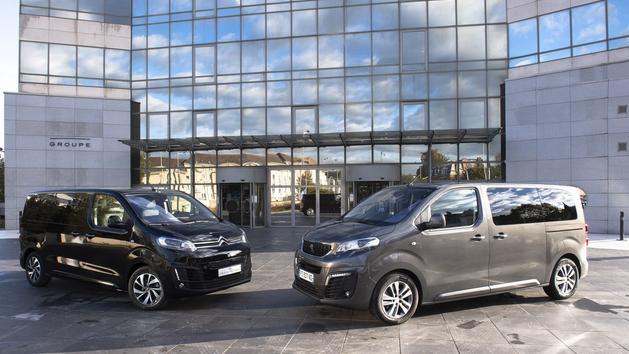Development of traffic restrictions in large cities, particularly in low-emission zones, explosion in deliveries linked to online commerce (+ 11% during confinement), companies' desire to convey an eco-responsible image, obligation for manufacturers to reduce their carbon footprint: never have the planets been so aligned to encourage the rise of electric vans.
Another factor argues in favor of the growth of these vehicles in the coming years: 44% of LCVs cover less than 300 km per day, 83% less than 200 km.
PSA
This is how PSA has developed an electric powertrain for its three generalist brands (Citroën, Opel and Peugeot).
It is based on the group's EMP2 platform used by cars in the upper segments.
The installation of the batteries under the floor has no effect on the loading volume, which remains identical to that of the thermal models.
On the other hand, PSA is the first manufacturer to offer two versions of accumulators, depending on user needs: 50 kWh or 75 kWh.
In both cases, the battery powers the 100 kW (136 hp) electric motor from the e-208.
The price difference between the two versions reaches 5,000 euros excluding tax.
Depending on the model chosen, the range varies from 230 to 330 km.
In practice, it depends on many factors, starting with the driving style, the speed of travel and the load volume.
PSA
According to PSA, an excess consumption of 4% per 100 kg must be expected for the Peugeot e-Expert and Citroën ë-Jumpy, which represents on average a reduction of 5 km of range for 100 kg of load.
To prevent the battery from draining too quickly, the driver has several levers.
With the "eco" and "normal" modes, the power is restricted and less demand is made on the battery.
The driver then only has power reduced to 60 and 80 kW respectively.
The “B” mode of the transmission activates the virtual brake when lifting the foot and allows to delay the recharging of the battery.
This operation can reach 47 hours (75 kWh battery), i.e. 16 hours more than with the 50 kWh model, on a domestic socket.
The wait will be halved on a reinforced 16A outlet.
On an 11 kW wallbox, recharging ranges from 5 hours to 7 hours 30 minutes with the large battery.
On a fast terminal, 30 to 45 minutes are enough to recover 80% of the energy.
Note that the e-Expert and ë-Jumpy are delivered as standard with a 7.4 kW single-phase on-board charger.
The three-phase 11 kW charger is billed at 300 euros.
No noise
PSA
To make everyday life easier, you can program a remote charge, during off-peak hours, for example, from an application on your smartphone, but also initiate thermal preconditioning in order to optimize recharging or autonomy.
The multimedia system has been revised to meet the needs of an electric vehicle: 3D TomTom Traffic navigation provides information on the available charging stations and the remaining range is permanently displayed.
It is also possible to follow energy flows and consumption statistics on the screen.
An urban and peri-urban test quickly convinced of the merits of electricity.
The absence of noise and gear shifting (a single fixed gear) promises a more restful ride.
The braking dosage is well managed, and a load of 400 kg (test vehicle) has little impact in terms of driving sensations and performance.
The top speed of 130 km / h is quickly reached, and, thanks to its torque of 260 Nm present from the start, these SUVs offer a pleasant going.
PSA
Like their thermal engine sisters, the electric versions are available in three lengths: 4.60 m, 4.95 m and 5.30 m, with their volumes of 4.6 m3, 5.8 m3 and 6 , 6 m3.
In addition to the classic single-row (three-seat), deep-cabin (two-row) bodywork, cabin platform or passenger shuttles, the platform opens up to numerous conversion possibilities.
The specific payload does not exceed 1275 kg.
Remain the price.
While the acquisition cost is around 10,000 euros higher than an HDI 120, the electric system compensates with more favorable taxation and reduced maintenance costs.
This limits the TCO deviation to 15% on average.
Finally, the Expert and the Jumpy are distinguished by differences in equipment

